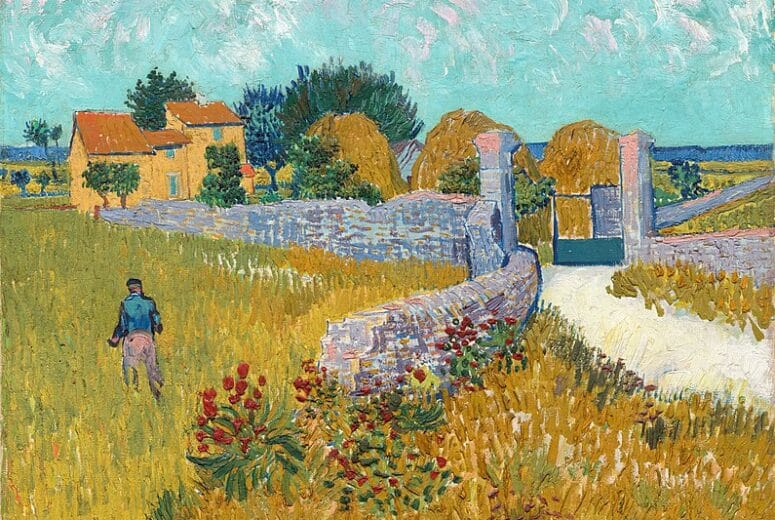
The Many Homes of Vincent Van Gogh: Tracing His Artistic Journey

Farmhouse in Provence, 1888, Vincent van Gogh. Source: Wikimedia Commons
Vincent Van Gogh, one of the most celebrated artists in history, led a life marked by wanderlust and a restless pursuit of artistic expression. From bustling cities to idyllic countryside retreats, the places Van Gogh lived played a significant role in shaping his artistic vision and personal journey. Delving into these locations offers a glimpse into the environments that inspired some of his most iconic works.
One of the earliest places Van Gogh lived was his native Netherlands. Born in the village of Zundert in 1853, Vincent spent his formative years surrounded by the picturesque landscapes of the Dutch countryside. While his time in the Netherlands laid the groundwork for his artistic aspirations, it was not until later in life that Vincent’s wanderlust led him to explore new horizons.
In pursuit of his artistic ambitions, Van Gogh ventured to various cities across Europe, including Paris, where he lived with his brother Theo during the 1880s. In Paris, he immersed himself in the vibrant art scene of the Montmartre district, rubbing shoulders with fellow artists and drawing inspiration from the city’s bustling streets and eclectic architecture. It was during this period that Van Gogh’s artistic style began to evolve, laying the foundation for his future masterpieces.
One of the most significant places Van Gogh lived was the vibrant city of Arles in the south of France. In 1888, he arrived in Arles seeking refuge from the bustle of city life and hoping to find solace in the tranquil landscapes of Provence. It was here, amidst the sun-drenched fields and vibrant colors of the Mediterranean, that Vincent’s artistic vision reached new heights. Inspired by the beauty of his surroundings, Van Gogh produced some of his most iconic works, including “The Starry Night” and “Sunflowers”.
Following a tumultuous period marked by personal struggles and mental health challenges, Van Gogh sought refuge in the picturesque village of Auvers-sur-Oise, located just outside of Paris. Vincent spent the final months of his life there, seeking solace in the serene landscapes of the
French countryside. Despite his fragile mental state, Van Gogh continued to paint with unparalleled intensity, producing a remarkable body of work that would go on to secure his legacy as one of the greatest artists of all time.
In conclusion, the places Van Gogh lived offer valuable insights into the life and work of this enigmatic artist. From his humble beginnings in the Netherlands to his transformative experiences in cities like Paris and Arles, Van Gogh’s journey reflects the universal human desire for connection, inspiration, and belonging. Through his art, Van Gogh invites us to see the world through his eyes – a world imbued with beauty, passion, and profound emotion.
Sources:
- Van Gogh Museum. “Vincent van Gogh Biography.” www.vangoghmuseum.nl/en/vincent-van-gogh.
- The Metropolitan Museum of Art. “Vincent van Gogh (1853–1890).” www.metmuseum.org/toah/hd/gogh/hd_gogh.htm.
- National Gallery of Art. “Vincent van Gogh: The Life.” www.nga.gov/features/slideshows/vincent-van-gogh-the-life.html.
- The Van Gogh Gallery. “Vincent van Gogh Biography.” www.vangoghgallery.com/misc/biography.html.
Get the first impression
Sign up for our newsletter and be the first to know about announcements in your area.




















































